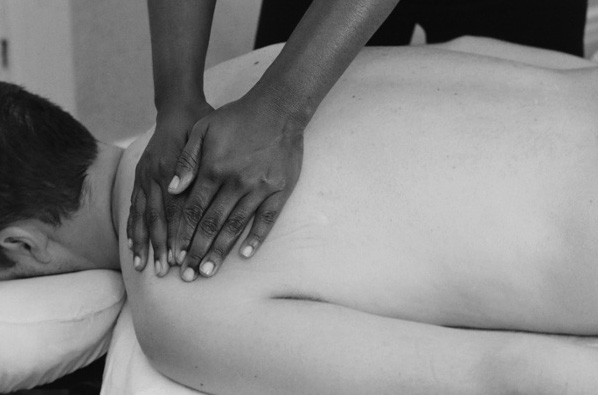8 Things I Wish I Knew Before I Became a Massage Therapist

When you begin your career as a massage therapist, you think about how much you will enjoy helping people feel better. Maybe you anticipate the freedom and flexibility you'll have when it comes to setting your own schedule and working for yourself as an independent massage therapist.
Or, perhaps you like to imagine the sense of purpose you'll have in working in a meaningful way. All of these things are true about massage therapy as a profession and it's what makes the work so great. But there are many aspects of the job that you might not be thinking about when you first start out. For those of you just beginning, here's a list of some of the things you should know starting out your career as a massage therapist.
1. Importance of Investing in Good Equipment
Investing in a quality table or chair for your massage therapy practice is a no-brainer. But you might be tempted to cut corners and use some DIY advice from fellow practitioners when it comes to other equipment. Not so fast. Tracy Bradley wrote a great blog post for the Young Thumbs on this issue:
"You have a top-of-the-line table so why skimp on other equipment? I’m all for saving money but raiding our pantry isn’t exactly putting our best face out there, you know? That’s right; I’m all in a tizzy about slow cookers, rice cookers and turkey roasters being used by massage therapists instead of towel cabinets and hot stone warmers ... I just don’t understand the resistance to professional equipment."
Tracy recommends investing in professional grade hot stone warmers and towel cabinets for your warming needs. It looks more professional, and they are less of a liability when it comes to insurance.
2. The Difference Between License and Certification
Massage therapists themselves are sometimes, understandably, unaware of the difference between massage therapy licensure vs. massage therapy certification. Consumers are most likely unaware of either, and assume that therapists must have some sort of legal authority to practice, but this isn’t always so, depending on what state you're in. So, who sets the standards? Why is each state different? And why is it so confusing? Massamio has a great overview of the massage therapy license vs. certification issue, with a slideshow that shows the state by state regulatory requirements for massage therapy.
3. How To Get Discounts on Products and Services
Your membership in one of the professional associations for massage therapists comes with exclusive discounts and benefits. Take full advantage of the wide variety of discounts available through ABMP, from retail products like Crocs work shoes to free music downloads from our newest artists on At Peace Media.
AMTA members get discounts on everything from equipment at Massage Warehouse to office supplies through Office Depot. See the full list of benefits for AMTA professional members here.
4. Where to Get Continuing Education Credits
Before becoming a massage therapist you probably knew very little about the requirements necessary to maintain your professional license.
For example, AMTA requires their members to complete 48 hours of continuing education every four years. ABMP requires that professional members keep current on state license or certification. Keep in mind that each state has their own requirements for CE hours. You may also want to check in with NCBTMB for their national certification CE requirements. It may not be easy keeping track of it all, but at least you have plenty of options when it comes to WHERE you can earn continuing education hours, or units.
5. Business Plan Basics
A business plan is an essential road map for your massage therapy practice's success. Planning, writing, and finalizing your business plan can feel like an enormous task. A great place to start with your business plan is to download the Business Plan Toolkit for Independent Massage Therapists, a free resource from Massamio.
6. Where to Find the Best Massage Research
Therapeutic massage and bodywork is now an established field of research with dedicated funding, researchers, and many venues and channels for dissemination of research.
Diving into research doesn't have to be a daunting task. We've put together a list of trusted and reliable resources to help you stay up-to-date on the latest research conducted in the field of massage therapy.
Refer to this list of the best massage and bodywork research resources available.
7. All of the Little Extras
You might work full time or part-time. The AMTA website says this about what full-time means: "It is important to note that due to the physical demands of massage, full time is defined as 17 or more hours of actual massage per week." In addition to actual massage, you'll spend many hours a week on all the little extras that come with running a business: things like scheduling, billing, housekeeping, marketing and business networking.
8. Assembling a Massage Music Library
When you begin your career as a massage therapist, you are probably starting out with zero to very few appropriate music selections for your therapy sessions.
As bodywork professionals who specialize in helping people relax, relieve tension and stress, and just feel better in general, music can be a subtle yet powerful ingredient contributing to the relaxation process. And thus music selection becomes key.
If you're just beginning to build a music library for your practice, or you're looking to add fresh tracks to your mix, here are five steps to selecting useful and satisfying massage music, and here's a free 13+ minute track from one of our favorite artists, Chris Ho.
What are some of the other things you wish you had known before you became a massage therapist? Add your comments and questions below!

